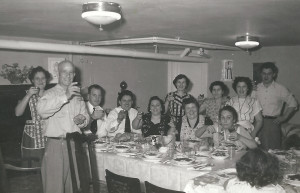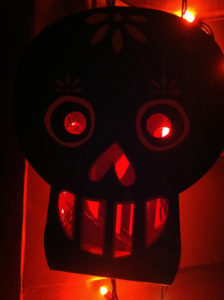Here in the United States, November 11 is Veterans Day, a national holiday honoring all who have served in the military. Older folks remember it as Armistice Day, which began as a commemoration of the formal ending of World War I, or the Great War, as it was known before World War II. It was to be the war to end all wars…. which, of course, has not been the case. Still, the armistice that ended that war, signed at the eleventh hour of the eleventh day of the eleventh month of 1918, is, in countries on both sides of the Atlantic, remembered today. In 1954, Congress replaced the word “Armistice” with “Veterans,” and this is the name we have given this national holiday ever since.
The day marks a much older celebration, though. November 11 is the feast of St. Martin of Tours, who also happened to be a veteran, but of the Roman army. He was born in 316 in the part of the vast Roman Empire that is now Hungary and became a soldier when he was a young boy. He was part of the imperial calvary (which is why he is often depicted on horseback) and was sent to serve the empire in Gaul (which is now France). At some point, though, Martin had a change of heart: he converted to Christianity and became a pacifist and refused to fight. He was imprisoned for the pacifism he preached, but eventually was released. He became a monk and founded a monastery there in France.
Many of the legends that revolve around St. Martin happen to involve wine. The best known story is of him coming across a disheveled drunken man shivering in the cold on a bitter winter’s day; Martin saw the man, took off his own woolen cape, cut it in two with his sword, then wrapped one half around the cold man to warm him. In the Middle Ages, he was one of the more popular saints and became a patron saint of all kinds of folks, from tailors to innkeepers to the French monarchy… but perhaps St. Martin is best known as patron saint of grape growers and winemakers, and even of those who delight in wine (sometimes even of drunkards).
It is no wonder, then, that St. Martin’s Day, or Martinmas, has become associated with wine. It is the day to taste the year’s new wine, which has been fermenting by now for only a few weeks. French Beaujolais wines are still, to this day, released on or around Martinmas. His day is also the last big religious feast day before Advent, which was, in earlier days, a time of fasting, and so it was also a day for a good, hearty meal, often of goose or turkey––essentially, a meal of thanksgiving for the harvest. Traditional Martinmas foods include goose and turkey, and also chestnuts and very hard biscotti, some of which are baked not just twice but three times. Hard as rocks? You bet. But there’s a reason for that: Biscotti di San Martino are meant to be dunked in that new wine that we’re drinking on his day.
In the parts of Europe that most thoroughly celebrate St. Martin’s Day, it is often a time of warmer weather, the last bit of it before the full onset of winter. Kind of like Indian Summer in America, it’s known in Italy, for instance, as l’estate di San Martino (St. Martin’s Summer). But this mild weather tends to be fleeting. Colder nights lie ahead and with Martinmas we find ourselves, by traditional reckoning of time, at the natural start of winter. It is, until Yuletide, a time of increasing darkness. The living world continues its process of shutting down and receding into itself: going underground. Trees are no longer growing above, but roots below the surface still are growing. And so the connections are strong, these darkening days, between the world of the living and the underworld of the dead.
Of course we honored these days of the dead at the start of the month with Halloween and All Saints and All Souls. But the connection of Martinmas to the days of the dead is just as strong, through memory. Before the change to the Gregorian Calendar, the 11th of November was Samhain, the Celtic New Year. Another name for Martinmas is Hollantide, and just as Halloween is a corruption of the words All Hallow’s Eve, so is Hollandtide, which comes from Hallowtide: the time of the sacred, the holy––those who have gone before. Many of our contemporary Halloween traditions come out of Hollantide traditions: the carving of turnips (replaced by pumpkins here in America) into Jack o’Lanterns and the going door to door in search of soul cakes, which has evolved into the trick-or-treating we know today. The day is also a traditional weather marker: If ducks do slide at Hollantide, At Christmas they will swim. / If ducks do swim at Hollantide, At Christmas they will slide. / Winter is on his way / At St. Martin’s Day.
And so we continue turning inward at this time of year, gathering in, preparing for winter. By all means, though, warm the evening at Martinmas with wine. Light a fire while you’re at it. The Celts would have lit huge bonfires on Samhain to welcome in the new year, and in our case, a small celebration involving a fire in the hearth or in the fire pit in the back yard is just as good, and even better with a bottle of wine and some good company. Good St. Martin himself would have it no other way.
Today’s chapter was originally printed in the Convivio Book of Days on Martinmas 2013. Pictured above: Parents, grandparents, aunts, uncles, godparents, raising their glasses at my sister’s christening dinner, Brooklyn 1953. “Salute!”

